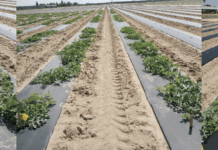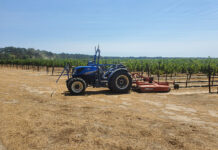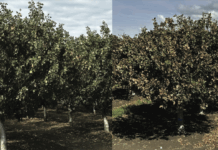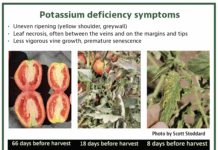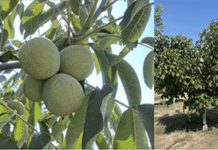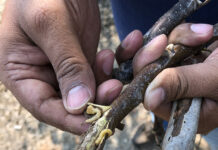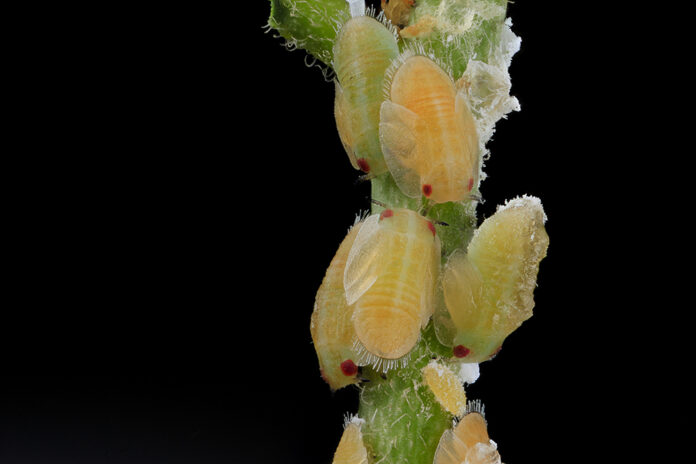
Acronyms mean a lot when it comes to protecting our citrus industry.
Many Californians are affected by the many acronyms being passed around as plans to protect a valuable agriculture crop in our state are formed. CDFA is leading the charge, with the Citrus Pest and Disease Prevention Division developing a statewide Action Plan for Asian citrus psyllid (ACP) and huanglongbing (HLB) disease.
Action taken to control the spread includes an HLB citrus quarantine in place throughout portions of Los Angeles, Orange, Riverside, San Bernardino, San Diego and Ventura counties in response to HLB detections in those areas. These steps are sometimes perceived negatively by growers. They are, however, necessary. It is a way to try to ensure the fruit goes through a collection and observation period to detect the vector. ACP carry the disease, and when they feed on a healthy tree, they spread the infection.
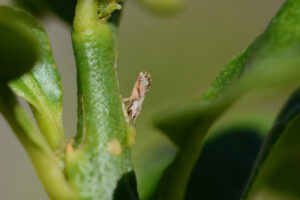
Quarantines can come with a huge price tag. Increased sorting and detection methods in place increases the cost of doing business as normal. Delay from picking to warehouse could have some adverse effects on the quality of the crop as it pertains to storage and packing. Because we isolate the picked fruit on site it delays cooling and other treatments in the packing sheds. This could allow other diseases to gain a foothold and cause additional losses. With a crop valued at $2.6 billion (in California) for the 2022-23 season, we can easily see its economic importance. During this season, California accounted for 92% of fresh market production in the U.S.
To put losses from HLB into perspective, we can look at the Florida market. HLB was first detected in 2005. One study (Hodges and Spreen 2012) estimates HLB reduced the value of Florida citrus output by $4.51 billion between the 2006-07 and 2010-11 crop production years. Many factors of abiotic and biotic stresses play a part in citrus losses. HLB economically affects commercial citrus groves in three ways. First, the disease increases the mortality rate of citrus trees. Second, the disease reduces the marketable yield per tree. Third, greening increases production costs. Yield and quality are inhibited in an infected grove to the point of 100% loss at times. Removal of entire blocks reduces growers’ ability to get positive returns.
Other studies conducted have different loss numbers, but we can see this destructive disease can bring with it additional large economic losses. The three losses previously listed are directly related to trees, fruit and production. Much of this has been a permanent loss to production. What we cannot ignore are the other financial impacts of the disease. Costs of fertilizer and insect control must increase to even try and maintain productivity. We strive to control the insect with numerous sprays and even trunk injections. We supplement the trees’ nutrition to offset the reduced nutrient and water flow capability of an infected tree. In addition to controlling the psyllid, growers can mitigate some of the symptoms of the disease via foliar applications of essential micro- and macronutrients, often supplemented with resistance-enhancing products (Shen et al. 2013a; and Spann et al. 2010a). These applications increase costs by $200 to $600 per acre, depending on the nutrient mix applied (Roka and Muraro 2010).
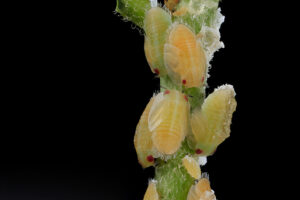
Less trees and fruit drives consumer prices up and could push buyers away from the citrus market. In one estimate, higher prices for the fruit that is left could still result in a loss to producers in the millions of dollars. The reasoning is even higher fruit and juice prices would not make up for the difference. Because the decrease in sales would far outweigh the increase in price received. Job losses in the fresh sector and the juice sector in Florida were reported in the tens of thousands. Lost income in the job sector and lost sales taxes for the state can add up quickly. An economy that depends greatly on this crop and job sector suffers heavily.
Reading additional reports, we might assume job loss would be proportional to the drop in production. One report expected HLB in orange groves would result in the loss of approximately 5,000 jobs per year in Florida’s processing sector. Job loss estimates are consistent with the estimates in Hodges and Spreen (2012), who estimate citrus greening has cost Florida an average of 8,257 jobs per year.
The disease is here in California. Because this disease has struck around the world, researchers and concerned citrus industry participants from numerous countries recently attended the seventh International Research Conference on Huanglongbing (IRCHLB) in March in Riverside, Calif. The sixth IRCHLB was held in Riverside in 2019 with more than 400 attendees from around the world. The global citrus industry continues to fight the battle with new treatments, genetic changes to trees, biostimulants and nutrition.
The theme of this year’s conference was, “Transitioning research to field reality,” and featured keynote speakers who provided research and technical updates regarding the global status of HLB as well as technical and poster sessions presented by many of the leading researchers from around the world. The conference allowed these scientists time to foster collaborations to advance their research and discuss notable and emerging ideas.
In California, we need people to understand and not be confused by acronyms. We cannot begrudge the millions of research dollars that will go toward finding solutions. Other funds will go toward action plans to control the spread of this devastating disease and potential loss to a very important part of our state.
Resources
Spreen, Thomas & Baldwin, Jean-Paul & Futch, Stephen. (2014). An Economic Assessment of the Impact of Huanglongbing on Citrus Tree Plantings in Florida. HortScience. 49. 1052-1055. 10.21273/HORTSCI.49.8.1052.
Ariel Singerman, Michael E Rogers, The Economic Challenges of Dealing with Citrus Greening: The Case of Florida, Journal of Integrated Pest Management, Volume 11, Issue 1, 2020, 3, https://doi.org/10.1093/jipm/pmz037
Singerman, A., & Useche, P. (2016). Impact of Citrus Greening on Citrus Operations in Florida. EDIS, FE983.
Vaz da Costa, G., Neves, C. S. V. J., Bassanezi, R. B., Leite Junior, R. P., & Telles, T. S. (2021). Economic impact of Huanglongbing on orange production. Revista Brasileira de Fruticultura, 43(3), 4.
Lopez, J. A., & Durborow, S. L. (2015). Huanglongbing and the California Citrus Industry: A Cost Comparison of Do Nothing vs. Do Something Management Practices. Texas Journal of Agriculture and Natural Resources, 27, 51–68.


